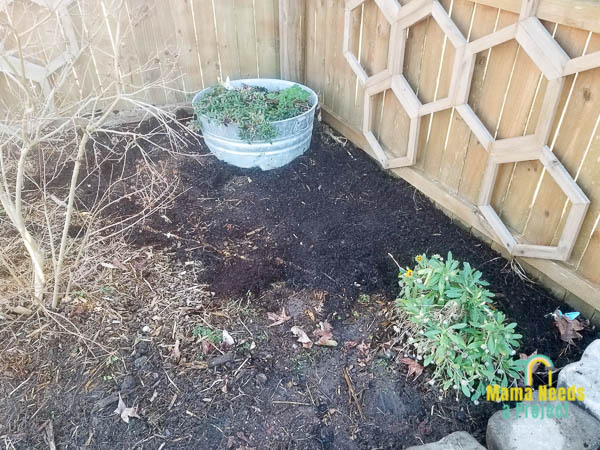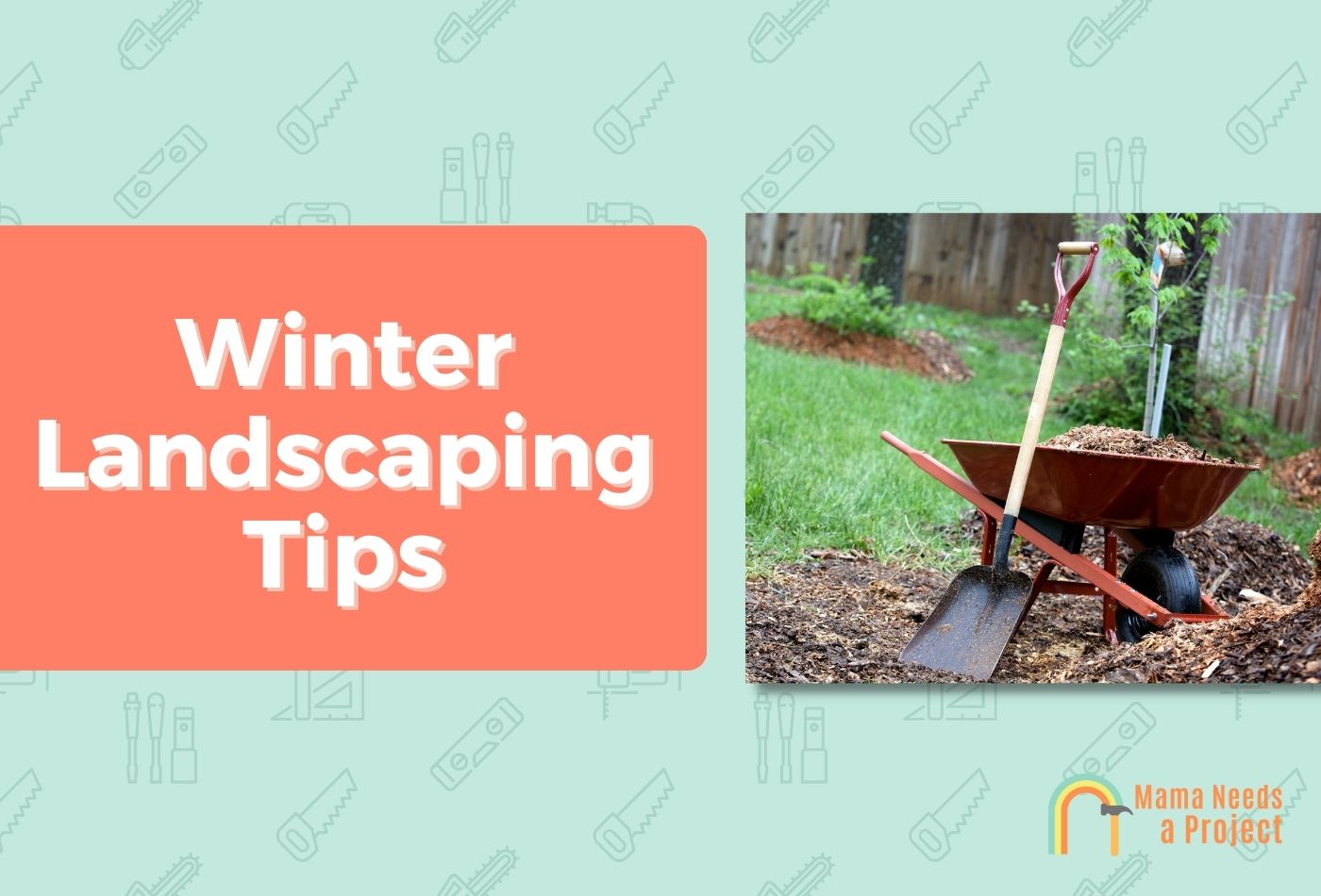Winter Landscaping Tips (Protect Your Garden from Winter!)
Believe it or not, once fall ends, that doesn’t mean your job is done when it comes to your landscaping.
There are a few tasks that should always be on your winter landscaping prep list to keep your greenery in good shape come Spring. Here are a few winter landscaping tips that I highly recommend.
Understanding Winter Landscaping
Winter presents a unique time for your landscaping.
During this dormant season, the absence of foliage and the stark silhouettes of your garden can offer a different kind of beauty. Here are some ways to appreciate and manage your winter landscape effectively:
Plant Selection
Choose plants that hold winter interest. Here’s a few options that I recommend.
- Deciduous trees: Their bark becomes a focal point after leaf drop.
- Evergreens: They maintain color and structure throughout winter.
Mulching

Mulching can be a great winter prep task for your garden and landscaping. Here’s why:
- It protect roots and maintains uniform soil temperature.
- It conserves soil moisture and reduces water loss from the ground.
Pruning
Winter is an opportune time to prune most plants because it’s easier to see the structure without leaves and plants are less prone to diseases.
Fertilization
Applying fertilizer during late fall or early winter can help replenish nutrients used during the growing season. However, it’s critical to ensure the ground is not frozen to prevent run-off.
Preparing the Lawn for Winter
As fall transitions to winter, your lawn requires specific care to ensure its health and vitality come spring. I recommend that you aerate and overseed, provide the right nutrients through fertilization, and keep up with mowing and raking to prevent thatch buildup and to protect the grass.
Aerating and Overseeding
Aerating your lawn is an essential fall activity. This process alleviates soil compaction, allowing water and nutrients to reach the grass roots more effectively.
- Aerate: Use a lawn aerator to make holes in the soil.
- Overseeding: After aerating, apply grass seeds evenly across the lawn to fill in thin spots.
Choose cool-season grass varieties if your region experiences cold winters. Overseeding should be done in the fall to allow new grass to establish before the frost.
Fertilizing
Fertilizing before winter provides your lawn with essential nutrients for healthy root development.
- Cool-season lawns: The best time to fertilize is in early fall. Apply a fertilizer with a higher ratio of nitrogen to promote leaf growth and potassium to improve overall plant health.
- Warm-season lawns: Fertilize in late spring or early summer instead of fall to prevent new growth that won’t survive the winter.
Mowing and Raking
Proper mowing and raking in the fall are critical to prepare your lawn for the winter months.
Plant and Tree Care During Cold Months
As temperatures drop, plant maintenance shifts to protection and preparation for spring growth. Focusing on proper pruning, safeguarding susceptible species, and selecting resilient evergreens can ensure your garden is good to go come Spring.
Pruning Hedges and Trees
Prune your trees and shrubs to remove dead or diseased branches, which can help prevent wintertime damage from snow and ice accumulation. It’s essential to:
- Prune deciduous trees when they are dormant to encourage healthy growth in spring. Check out the differences between pruning and trimming for more info.
- Avoid heavy pruning of evergreens; instead, lightly shape them if necessary.
Protecting Vulnerable Plant Species
Take extra care with plants that are less hardy in your climate zone, especially if they face risks of freezing and thawing:
- Mulch: Apply 2-4 inches of mulch around the base of perennials and ornamental grasses to insulate root systems.
- Wrap: Consider burlap wraps for delicate shrubs to shield them from cold winds.
Selecting and Caring for Evergreens
Evergreens can provide year-round interest in your landscape:
- Selection: Choose species well-suited for your region’s climate to ensure they thrive.
- Care: Minimize fertilization during the fall to prevent new growth that could be damaged by cold.
- Bark & Foliage: Incorporate varieties like hellebores, which offer vibrant color even in winter months.
Preventing Winter Damage to the Landscape
Winter can be a challenging season for your landscape, making it essential to address issues like ice and snow management, effective water drainage, and the timely removal of leaves and debris.
Addressing Ice and Snow
Snow cover can insulate plants against severe cold, but too much accumulation or ice can cause branches to break. You should gently brush off snow from branches and avoid shaking them, which can cause damage. For ice, it’s best to let it melt naturally. If you must clear a path, use calcium chloride-based products rather than sodium chloride, which can be harmful to plants.
Managing Water and Drainage
Water your plants deeply and infrequently to encourage deep roots and reduce water loss.
Perform a soil test to check drainage capabilities; the soil should sufficiently absorb water without pooling which can lead to root rot.
Adding a two-inch layer of mulch around trees and shrubs helps maintain uniform soil temperatures and reduces water loss.
Divert water from structures with proper landscaping slopes and drains to prevent water from accumulating at the base of plants.
Dealing with Fallen Leaves and Debris
Decomposing leaves can smother your grass and lead to fungal diseases or patchy areas where grass doesn’t grow back.
Regularly rake or blow leaves off the lawn into a compost pile.
Trimming any dead or diseased branches before winter helps minimize debris and keeps the landscape clean and healthy.
Frequently Asked Questions
How can I protect my plants during winter?
To safeguard your plants in winter, apply a layer of mulch to regulate soil temperature and retain moisture. For sensitive plants, consider using burlap wraps or frost cloths to shield them from harsh conditions.
What landscaping maintenance should be done in cold weather?
During winter, it’s important to remove snow from delicate areas and add mulch around trees and shrubs to prevent erosion. Pruning dormant plants and maintaining equipment are also key tasks for cold-weather landscaping maintenance.
How do I prepare my garden beds for winter?
Before the first freeze, clear your garden beds of debris and weeds, and add a layer of compost or mulch to enrich the soil and protect plant roots. Ensure that perennials are properly cut back and any vulnerable plants are covered.
Final Thoughts
When it comes to winter landscaping, there are a few “must dos” to keep your garden in shape. By removing leaves, mulching, and pruning your shrubs and trees – your yard will be good to go come Spring!

